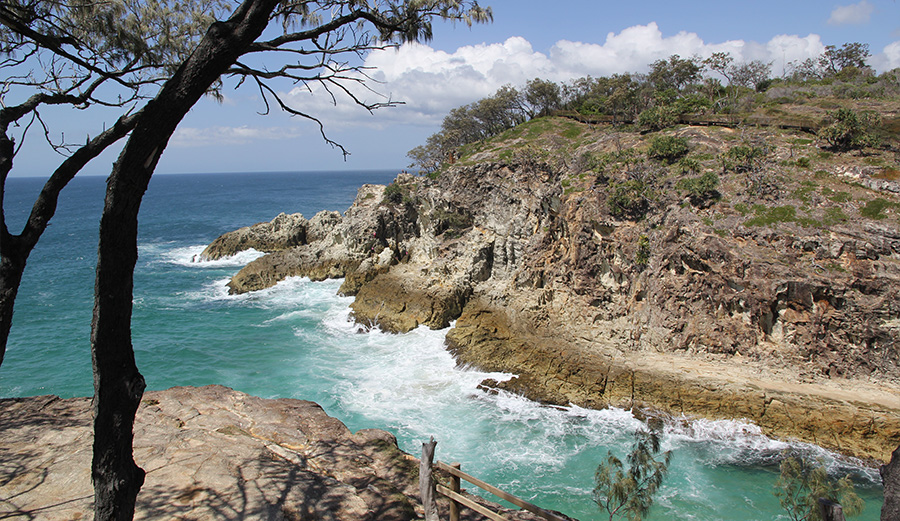
Marine Ecology
North Stradbroke Island forms part of the Eastern boundary of Moreton Bay . Moreton Bay has high species diversity because is it within a biogeographic overlap zone – where plants and animals from northern and southern areas live. Moreton Bay’s diversity is increased due to the diverse habitats in close proximity. The Queensland Museum’s Wild Guide to Moreton Bay lists these as: mud and sand flats; seagrass beds; mangroves and algal-dominated intertidal areas; extensive soft-bottom, subtidal communities; rocky shores; reefs covered in coral; and pristine sandy ocean beaches. In Moreton Bay there are a large number of species which are endemic – they only live or grow within the Bay.
The Queensland Museum collects data of where species are found. This database shows there to be more than 715 species of fish in Moreton Bay, 1190 species in the wider area of the Moreton Bay Marine Park (including the nearby offshore reefs), and more than 3000 species of freeliving marine invertebrates. In just two weeks during 2005, 53 previously unknown marine species were found in Moreton Bay.
Within the whole of Moreton Bay, the highest diversity of marine species is centre at the northern end of Stradbroke Island. This ‘hotspot’ of biodiversity, includes Myora, Peel, Bird and Goat Islands and has coral reefs as well as hard and muddy-sand bottoms. It is thought that the diversity is due to the clean coastal waters which flow between Moreton and Stradbroke Island.
See the Queensland Museum’s Wild Guide to Moreton Bay and adjacent Coasts
Turtles
All six species of turtles which live in Australia are found around Straddie and Morton Bay: Loggerhead, Green, Hawksbill, Leatherback, Olive Ridley, and Flatback Turtles.
The intertidal and subtidal sandflats on the western coasts of Stradbroke and Moreton Islands are home to large populations of the most common of these, the Green Turtle and Loggerhead Turtle.
Dugongs
Dugongs also live in the seagrass beds in Moreton Bay, but occasionally are seen around Point Lookout. Dugongs are mammals and are acknowledged internationally as being vulnerable to extinction.
Whales and dolphins
Straddie is well known to be the best land-based place for whale watching with nine species of whales passing by each year, mostly humpbacks. Dolphins are seen daily, surfing the waves off Straddie; they are a Point Lookout attraction!



